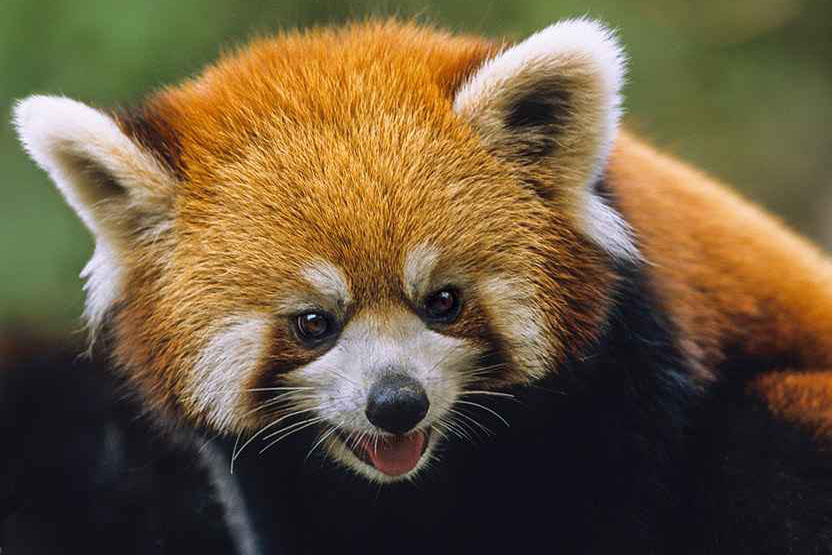
A major new study has provided the clearest picture yet of the world’s most critically endangered species, showing that conservation efforts can still make a difference through targeted protection programs that have already saved hundreds of species from the brink of extinction.
Published in the journal Nature, the study found that 10,443 species are now classified as critically endangered, the most severe category before total extinction in the wild.
Species earn this designation on the International Union for Conservation of Nature (IUCN) Red List when they meet strict criteria, including rapid population declines, severely limited ranges, or when fewer than 50 mature individuals remain.
“It’s shocking to realize that more than 1,500 species—about 15% of all critically endangered species—are estimated to have fewer than 50 mature individuals left in the wild,” said Ricky Gumbs, a researcher at the Zoological Society of London and co-author of the study, in comments to Mongabay.
About 77% of these species have such status primarily due to extremely restricted habitats. Alarmingly, seven species—including three amphibians, three turtles, and one porpoise known as the vaquita (Phocoena sinus)—face a greater than 50% risk of extinction within the next decade.
Global Hotspots
Just 16 countries account for more than half of all critically endangered species. These are mainly found in the Caribbean islands, the Atlantic coast of South America, the Mediterranean, Cameroon, Lake Victoria, Madagascar, and Southeast Asia. Many species are endemic to a single country, making national conservation efforts essential.
Madagascar alone hosts 670 critically endangered species, many of which exist nowhere else on Earth. Islands like Hawaii are also high-risk areas, hosting about 40% of critically endangered species despite covering less than 6% of global land area.
What makes the situation even more urgent is that nearly 30% of these species haven’t been reassessed on the IUCN Red List in over a decade, meaning scientists may lack up-to-date information on their current status—populations may be collapsing rapidly without detection.
Currently, 56% of critically endangered species are in decline. Only 2.6% are stable, and a mere 0.5% are increasing. More than 13% are considered "possibly extinct", meaning they may already have disappeared, though scientists haven’t been able to confirm it.
Plants and Insects Most Affected
More than half of critically endangered species are plants (60%), followed by vertebrates (25%) and invertebrates (15%). Another recent assessment found that nearly half the known tree species in Central America are also at risk of extinction.
“We’ve stripped and fragmented vast areas of forest. It’s not a pretty picture ecologically,” said William Laurance, a tropical ecologist at James Cook University in Australia who was not involved in the study. “You expect bad news—but the overall picture is bleaker than I imagined.”
What’s Driving the Extinction Crisis?
The study identifies climate change as a major driver of extinction. But agricultural expansion, livestock and fish farming, and deforestation are also major threats—especially to vertebrates like mammals, birds, and reptiles.
Pollution is the main threat for freshwater species, while overfishing affects nearly three-quarters of marine species.
For invertebrates, the biggest threat is invasive species, which now endanger about a third of critically endangered species in this group. Among the most destructive invasive mammals are house mice, feral goats, wild pigs, and domestic cats, which are particularly damaging on islands where native species evolved without them.
Conservation Works—But Not for All
Despite the alarming situation, conservation efforts have delivered results. Since 1993, protection measures have prevented the extinction of at least 15 bird species and 8 mammals. Some of these are now showing signs of recovery.
Since 1980, the conservation status of 59 formerly critically endangered species has improved enough to be removed from the category.
However, the study found major gaps in conservation efforts. While thousands of species benefit from protection, many—especially lesser-known insects and plants—receive no support at all.
Most critically endangered species need habitat protection from further degradation, while others require active habitat management, such as removing invasive species or restoring damaged ecosystems.
About half the species require direct human intervention, including captive breeding, relocation to safer areas, or veterinary care.
The financial cost of saving critically endangered species from extinction is estimated at $1–2 billion per year—a tiny fraction of the global economy and less than 2% of the combined net worth of billionaires Elon Musk, Jeff Bezos, and Mark Zuckerberg.


Comment
Reply